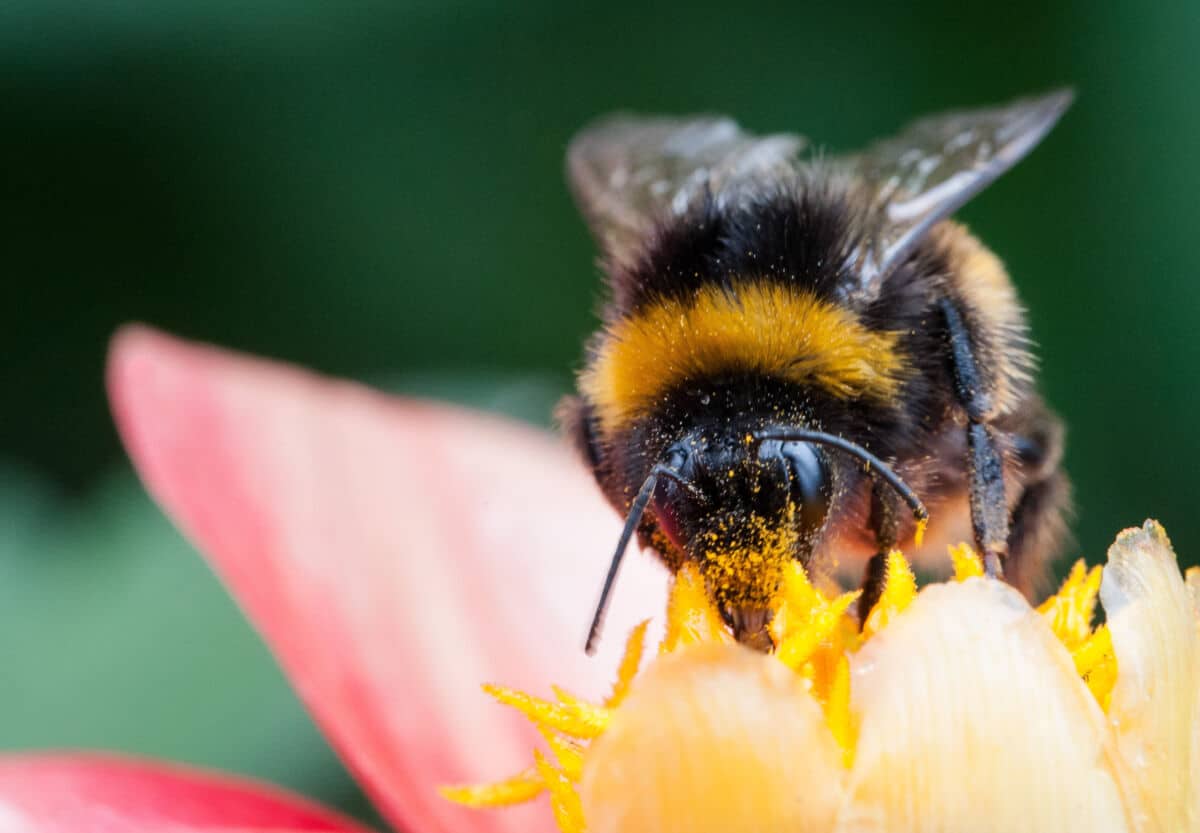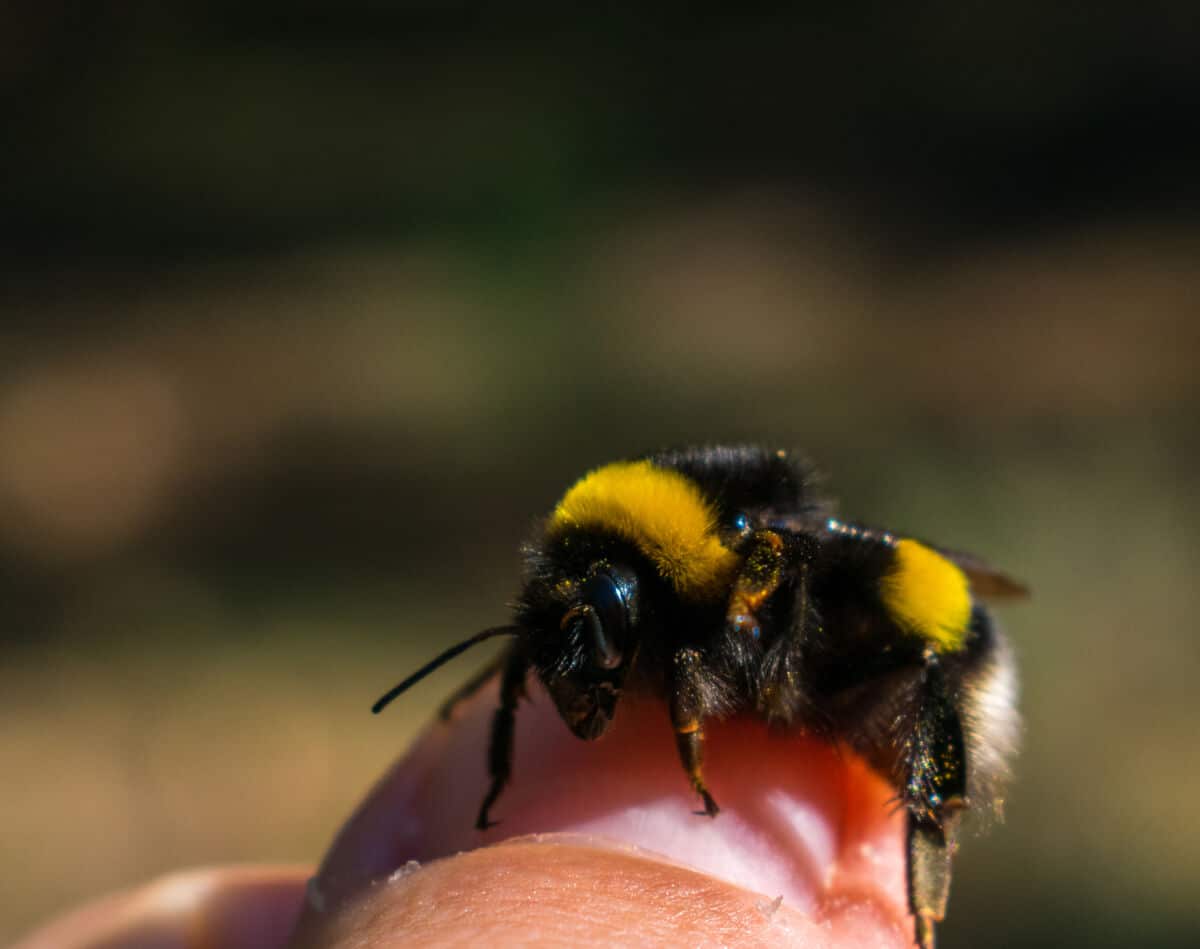How To Get Rid Of Bumble Bees Around Your House
Seeing one or two bumble bees around your home isn't necessarily a cause for concern.
But if you discover that you do have a problem, you will need to know how to get rid of bumble bees. It isn't as hard as some of the other pests that could be invading your home, but it isn't as easy as you may think.
Below you will find information on what bumble bees look like, how to get rid of them, what attracts them, and any products you can use to aid in your efforts of removal.
What is a Bumble Bee?
A bumble bee is an insect that flies. You have likely seen at least one during your lifetime, but likely way more than that.
Their bodies are short and fat, and they have wings. A bumble bee is typically covered in fuzz as well, setting them apart from their cousins, the wasps. Similar to carpenter bees, females have a stinger and the males do not.
What is the Life Cycle of a Bumblebee?

A bumble bee nest is started by a solitary queen. The queen will emerge in the spring and begin searching for a suitable place to build a nest.
Generally the bumble bees use old holes in the ground from rodents. Mice holes are definitely prime real estate for a queen looking to begin building her colony.
She will lay between five and eight eggs which will develop into worker bees, who surprisingly only live for up to 28 days! The queen will then begin building the colony and by mid-summer, the colony could have up to 100 worker bees.
What are Bumble Bees Good for?
Bumble bees are the big fuzzy insects you may see flying around from spring until fall. While they are not producers, they definitely play an important role in nature.
They are known as pollinators. Bumble bees will go around and feed on the nectar and pollen in flowers and help to pollinate them. Sometimes when the first round of worker bees have hatched, the cocoons are used for short-term storage of nectar.
Bumble bees will not mass produce nectar or store a lot, just enough to help the colony get along.
Do I have a Bumble Bee Problem?
If you are seeing a nest located near your home or in a space that you will be frequenting such as a barn or outdoor shed, you may have to take steps to have the bumble bees removed.
How to get rid of bumble bees depends on the route you want to take. If the nest isn't going to affect your life, you can just wait for them to die out when the seasons change. Trying to remove them may cause added complications.
If the nest is in a place where the bumble bees will bother you or a member of your family, you will have to get rid of them or relocate the nest.
How to Get Rid of Bumble Bees
Making the decision on how to get rid of bumble bees that are in your yard or around your home isn't easy, especially if you have a garden that needs pollinating.
You will need to check with your individual state to see the guidelines regarding the removal of bumble bees as they vary state to state. Below you will find suggestions on how to get rid of bumble bees and what tools you will need to accomplish the mission.
Please note that before you attempt to remove a bumble bee nest or even watch one to see their habits, wear protective clothing.
- Watch for where the nest is located. If you are seeing a lot of bees, you will need to watch where they are flying. Check around stones in the garden, next to the house where mice could have dug holes, and near trees.
- At night, attack the nest with the spray of your choice. There are several available at hardware stores, but D-Force HPX is the most recommended.
- If the nest is in a structure, using Delta Dust is a good idea. It will last for up to six months and kills the bees immediately on contact.
If you are interested in trying to get rid of the bumble bees using a do-it-yourself trick, there is one for you.
You will need dry cat food, boric acid, and grape jelly. Mixing these ingredients together and forming it into balls is how you begin. You will then need to spread out the balls near the nest.
The theory behind this is that the bees will be attracted to them and bring them back to the nest where the colony will be poisoned. After this is accomplished, cover the nest hole with dirt to ensure another queen bee will not use it in the future.
Relocation may also be an option, though you greatly increase your risk of being stung.
You can use something like a birds nest box, making sure you place the device over the nest after dark. You must then relocate the box to another area, preferably somewhere it can thrive.
Protective clothing is a must when doing this. If you are allergic to bee stings, this should not be done by you at all.
How do You Deal with a Bumble Bee Sting?

While bumble bees look cute from a far, they can be a real nuisance if they are disturbed.
Because their stinger isn't jagged, they can sting you over and over again. The queen and her drones will come out full force if provoked.
Females are the only ones who can sting, the males are not equipped with stingers. While bumble bees are generally thought to be less aggressive than their close mates the honey bees or wasps, but if their nest is threatened they won't hesitate to attack.
If you are allergic to bee stings, you will need to be treated immediately. You may not know whether or not you have an allergy but if you do and are stung, you will show signs instantly.
If it turns out you aren't allergic, you will probably still deal with some pain and irritation around the site. It is recommended that you take Benadryl for the itchiness which may occur.
How do I Prevent the Return of Bumble Bees?
Once you have gone through the removal process, you will have to follow through with some aftercare to ensure bumble bees will not return. Below you will find the steps you will need to take to be sure more bumble bees do not appear again the following spring.
- Cover up the nest. Once you have sprayed and killed the majority of the bees, you will need to seal the hole. Generally mice holes are used, but sometimes holes dug by groundhogs or moles are also used. Scour your yard and garden and fill in any holes that could be used as a nesting ground.
- Place your flowers away from your home. Bumble bees are pollinators and are attracted to flowers. If you want a garden, place it far enough from your home that entering and exiting will have no affect on the bees at all.
- Fill in cracks in your siding or bricks. Whether you have a brick walkway with holes or some easy entryways into your siding, they need to be addressed. The queens will re-emerge in spring and begin the process of finding a nesting place.
Learning how to get rid of bumble bees isn't difficult but it can be frustrating. Sometimes your first efforts will not give you the results you want. Be patient and try to avoid angering the bumble bees, especially if you are not sure if you are allergic to their sting.
Read all of the labels of the products that claim to get rid of bumble bees to be sure how and if they can be used around pets or children.
And finally, always make sure you follow up with covering up the nest. You don't want your efforts of removing the bumble bees to go wasted, especially during the same season.
How To Get Rid Of Bumble Bees Around Your House
Source: https://www.gopests.com/how-to-get-rid-of-bumble-bees/
Posted by: falktrards.blogspot.com

0 Response to "How To Get Rid Of Bumble Bees Around Your House"
Post a Comment